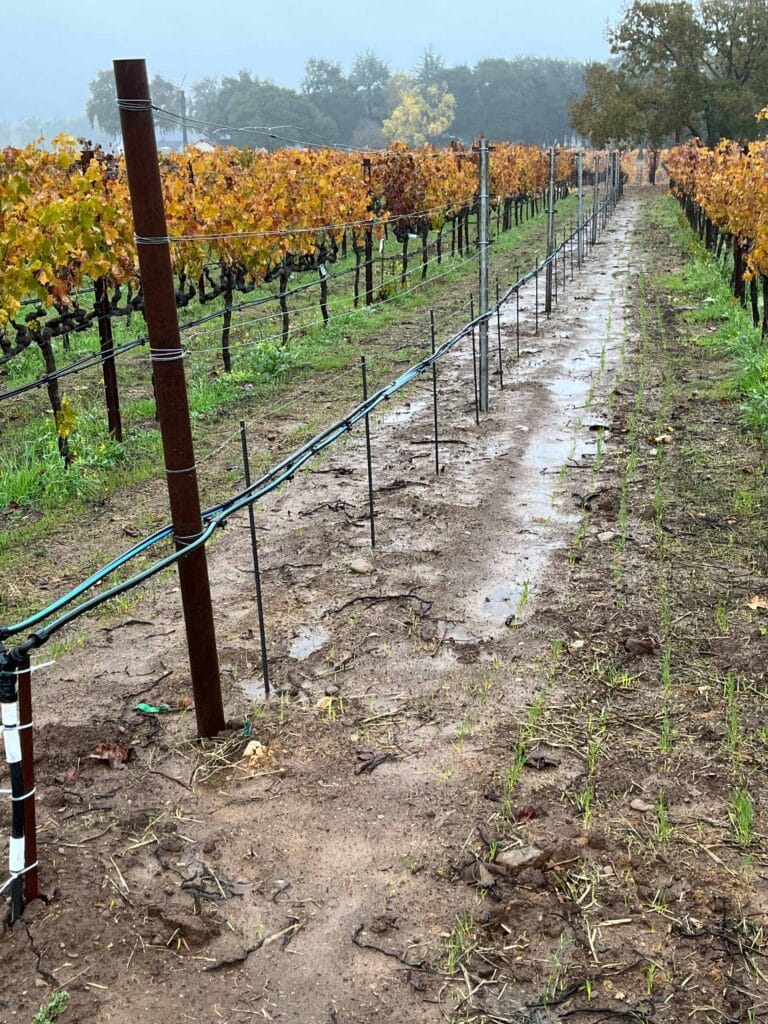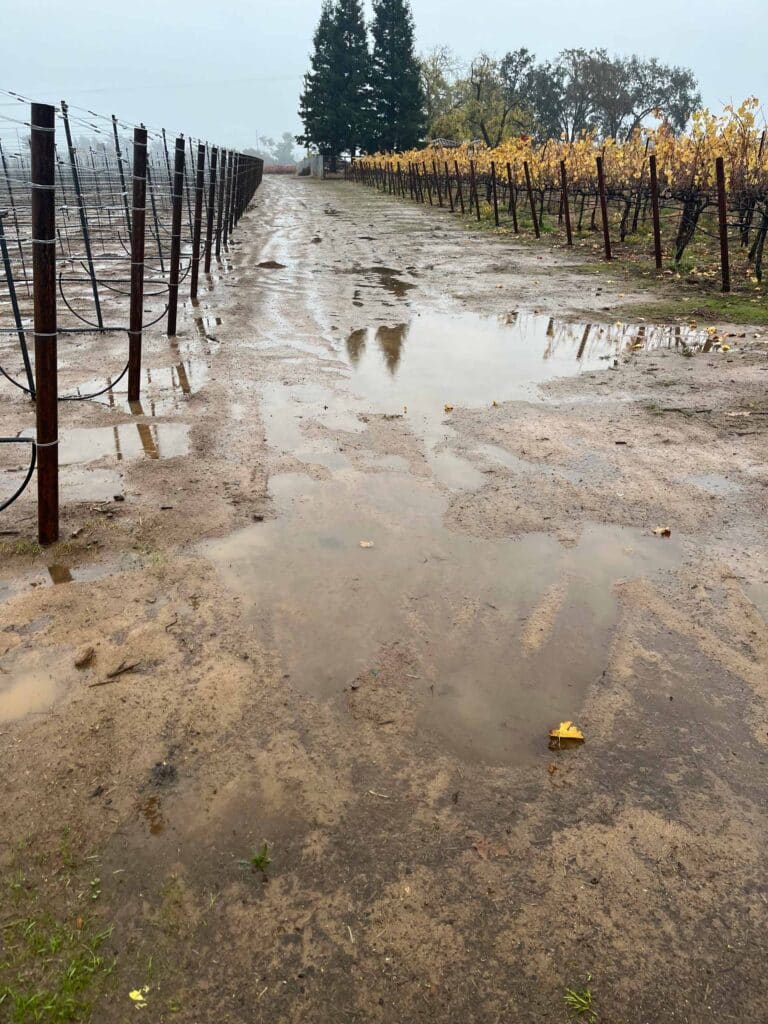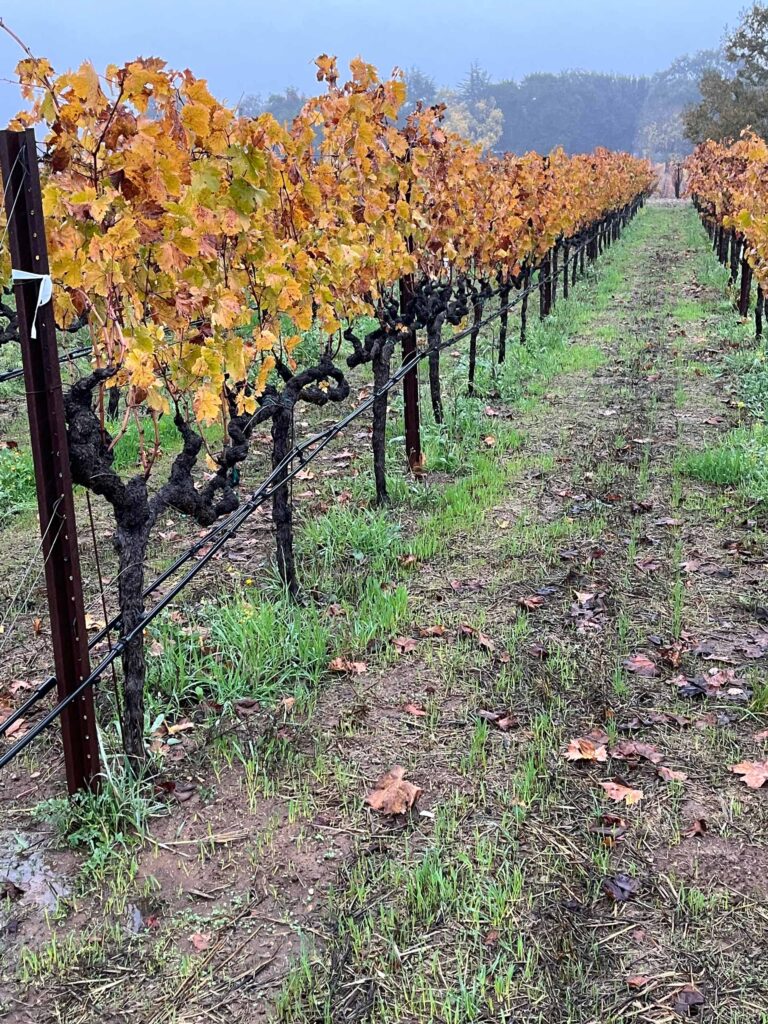How Heavy Rainfall Impacts Napa Valley Vineyards After Harvest: The Good and the Bad
As atmospheric rivers in California become more frequent, vineyards face unique challenges and opportunities when dealing with such prolonged periods of heavy rainfall. While we welcome the rains of the dormant season, how are we preparing for these more common climatic events?
The Benefits of Heavy Rain in Napa Valley
Heavy rain can be a blessing in disguise for California vineyards, where water resources are scarce, especially so during the growing season. After months of growth and harvest, frequently (and positively) in absence of rain, groundwater is depleted. Here are some of the key benefits that have us breathing a sigh of relief through the wet weather:
- Replenishing Soil and Aquifers: Our climate in Napa Valley often leaves soils parched after months of warm, dry weather. Rain helps replenish the groundwater reserves in the vineyard – crucial for many of our dry-farmed sites like Aldo’s and Old Kraft, among others. With soils filled before budbreak, the vines are setup for the season ahead.

- Effect on the Start of Growing Season: Wet soils are cooler and will warm slower than dry soils. As budbreak is correlated to soil temperature, fully hydrated soils delay budbreak until past periods of increased frost risk.
- Leaching Salts: Soils naturally accumulate salts through the weathering of minerals. Any irrigation has a further potential to increase overall salt concentrations depending on the quality of the water applied. Excessive salinity in soils has a negative impact on yield, growth, and longevity. Rains provide a much-needed flush to the soils, dispersing salts and decreasing their concentrations.

The Challenges Napa Valley Vineyards Face
While the rain is needed, its intensity can sometimes create more problems than it solves, particularly given Napa Valley’s unique landscape of hills, valleys, and river systems.
- Soil Erosion: Excess water on most vineyards in the Napa Valley will naturally drain towards the Napa River. The sheer volume and speed of water along this path can strip away nutrient-rich topsoil, leaving behind less fertile subsoil. This erosion depletes the vineyard’s most valuable resource—the soil needed to support healthy vine growth.
- Waterlogging: Heavy rain can increase the incidence of water pooling in the field. Saturated soils over extended periods of time can deprive vine roots of oxygen, causing stress to the dormant vines and increasing the risk of root rot. Prolonged water saturation also alters the soil’s microbial balance, favoring harmful fungi and bacteria that thrive in anaerobic (low oxygen) conditions. For young vines with less developed root systems, waterlogging can stunt growth and potentially kill the plant if drainage doesn’t improve.

Resiliency and Planning for Heavy Rains
As the frequency of atmospheric river events have increased, Biale has taken proactive steps to capture as much of the benefits from heavy rains while mitigating the negatives. Key practices in our overall strategy include:
- Drainage: Vineyards with notable swales or topography are evaluated and, on occasion, outfitted with additional drainage tile – underground piping to move excess water away from areas with drainage issues. Notably during the course of restoring Old Kraft Vineyard nearly 20 years ago, drainage tile was installed, ultimately aiding in the overall health and quality of the vineyard.
- Cover Cropping and Limiting to No-Till: While we have always relied on extensive cover cropping of our vineyards for overall soil health and structure, we have increasingly moved toward mowing, rather than tilling our vineyards. A mowed cover crop maintains the root structure of the cover crop species, creating greater permeability of the soil for the water that falls. Tilled or bare fields promote pooling of water and increase waterlogging, runoff, and erosion. By maintaining cover crop in the rows, we can capture as much of the rains as possible, limiting runoff and soil erosion.
Every vineyard is different, and the impact of a storm can vary widely based on factors like soil composition, topography, and existing infrastructure. By developing practices and strategy long before a weather event, our team looks to turn even the heaviest of downpours into an opportunity for renewal.